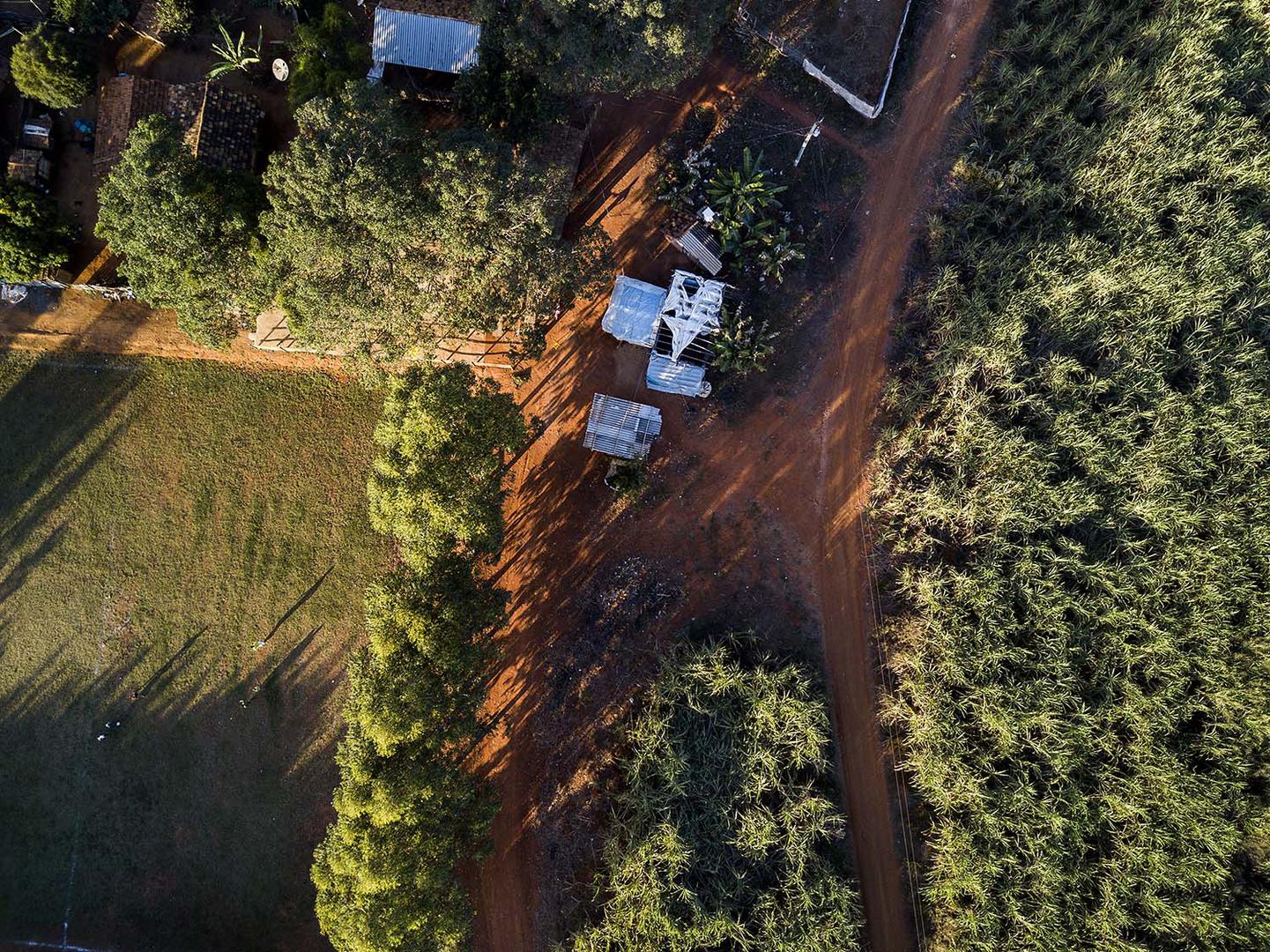Brazil Slacking on Dangerous Pesticide Regulations
Expand Drone view of a quilombo (Afro-Brazilian) community in Minas Gerais State, southeast Brazil.

Some of the houses are around 20 meters from the adjacent sugarcane plantation. © 2018 Marizilda Cruppé for Human Rights Watch This week, in a puzzling move, the Brazilian regulatory agency on public health, ANVISA, approved a new set of rules establishing risk of death as the only criterion for classifying a pesticide as “extremely toxic.” Drone view of a quilombo (Afro-Brazilian) community in Minas Gerais State, southeast Brazil. Some of the houses are around 20 meters from the adjacent sugarcane plantation. Until now, ANVISA considered not only the risk of death but also reactions including eye and skin irritations when classifying pesticides as extremely toxic. Even if not lethal, these reactions can lead to long-term health impacts.
These classifications help guide the use of pesticides in practice. However, the agency has yet to satisfactorily explain how its new rules provide adequate protection for public health. Last year, Human Rights Watch documented how pesticide spraying in Brazil puts people’s health at risk. People suffer nausea, vomiting, headache, and dizziness. In addition, chronic exposure can lead to infertility, damage fetal development, and cause cancer. Brazil is an agricultural powerhouse, so the problem is far from trivial.
The country’s industrial farming of soy, sugarcane, and cotton deploys dangerous pesticides. Across rural areas, people get sick from pesticide drift, both from ground and aerial spraying. Buffer zones – required distances from homes and schools – are non-existent, inadequate, or unenforced. Brazil’s government keeps no reliable data on how many people suffer from pesticide poisoning. It seems clear that official data grossly understate the problem, and the Ministry of Health acknowledges that under-reporting is a concern. Human Rights Watch is calling on the government to review Brazil’s pesticide policies. This should include analysis of the major health effects of acute and chronic exposure to pesticides among people in rural areas, including children, pregnant women, and other vulnerable persons. In the absence of such a review, it is alarming to see ANVISA tinkering with the rules. ANVISA’s rule change comes at a time when the government is approving new pesticides – and new brands of old formulas – at a gallop. Congress is considering a bill to shrink the role of the health and environment ministries in pesticide approvals and to loosen rules for pesticide use. Congress should reject the bill that weakens pesticide oversight, and Brazil’s regulatory agencies should not retreat from rigorous enforcement. Pesticide use requires constant scrutiny. Government failures to ensure this happens can lead to serious human rights violations – exposure can cause serious harm to health, poison drinking water, and damage the environment. Brazil needs to get tougher and not let up on protecti.
Read the full article at the original website
References:
- https://www1.folha.uol.com.br/ambiente/2019/07/nova-regra-da-anvisa-reclassifica-agrotoxicos-muito-toxicos-em-categorias-mais-baixas.shtml
- https://www.hrw.org/report/2018/07/20/you-dont-want-breathe-poison-anymore/failing-response-pesticide-drift-brazils
- https://www.hrw.org/news/2018/07/20/interview-drowning-pesticides
